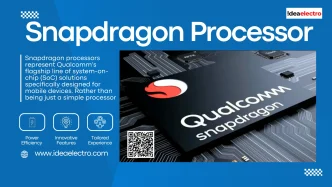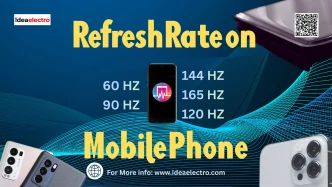Panda Glass is a chemically strengthened alkali-aluminosilicate glass designed to protect electronic displays. Developed by Dongxu Group, a Chinese manufacturer, it serves as a durable and transparent cover for devices like smartphones, tablets, and smartwatches. Unlike its pricier competitors, such as Corning’s Gorilla Glass or AGC’s Dragontrail Glass, Panda Glass is tailored for manufacturers seeking high-quality protection at a lower cost. Its key attributes include exceptional transparency, scratch resistance, and resilience, making it a go-to choice for mid-range and budget devices.
Manufacturing Process
Panda Glass is crafted using a sophisticated process that ensures its durability and clarity. Its core composition, alkali-aluminosilicate, is subjected to an ion-exchange process where sodium ions in the glass are replaced with larger potassium ions. This creates a compressive stress layer on the surface, enhancing the glass’s resistance to scratches and impacts. The production involves precision techniques such as cutting, edge grinding, and polishing to achieve a flawless finish. Dongxu Group’s advancements in manufacturing technology have enabled large-scale production, ensuring consistent quality and affordability.
Key Features and Benefits
Panda Glass boasts several features that make it a standout choice for device manufacturers:
- High Transparency: With nearly 99% light transmission, Panda Glass ensures vibrant and clear display quality.
- Scratch Resistance: Its chemically strengthened surface resists scratches from everyday use, prolonging device lifespan.
- Impact Protection: The compressive stress layer enhances its ability to withstand drops and impacts.
- Lightweight Design: Thin and lightweight, it’s ideal for portable devices like smartphones and wearables.
- Cost-Effectiveness: Compared to premium alternatives like Gorilla Glass, Panda Glass offers similar performance at a lower price point.
- Thermal and Stress Resistance: It maintains structural integrity under varying temperatures and physical stress.
- Eco-Friendly Options: Dongxu Group emphasizes recyclable materials and sustainable production practices.
These features make Panda Glass a versatile and practical choice for a wide range of applications.
Applications of Panda Glass
Panda Glass is widely used in consumer electronics, particularly in smartphones, tablets, smartwatches, and fitness trackers. Notable devices featuring Panda Glass include the OPPO Reno11 F and Xiaomi Poco C55, which leverage its durability and clarity for enhanced user experiences. Beyond personal devices, Panda Glass is employed in automotive displays, touchscreen panels, and even solar panels due to its customizable thickness (ranging from 0.33mm to 2mm) and adaptability to various shapes. Its versatility makes it a favorite among manufacturers aiming to balance quality and cost.
Panda Glass vs. Competitors
When compared to its competitors, Panda Glass holds its own as a budget-friendly yet reliable option:
- Gorilla Glass: Developed by Corning, Gorilla Glass is the market leader, known for superior durability and scratch resistance. However, it comes at a higher cost, making Panda Glass a more affordable alternative for mid-range devices.
- Dragontrail Glass: AGC’s Dragontrail Glass offers similar properties to Gorilla Glass but is less prevalent. Panda Glass competes closely with Dragontrail in terms of performance and price.
- Market Positioning: Panda Glass is favored by manufacturers like Huawei, Xiaomi, OPPO, and Samsung (for budget models) due to its cost-effectiveness without significant compromises in quality.
While Gorilla Glass dominates the premium segment, Panda Glass has carved out a niche in the mid-range and budget markets, offering a compelling alternative.
Limitations
- Durability: While robust, Panda Glass may not match the extreme durability of Gorilla Glass in high-stress scenarios.
- Scratch Susceptibility: Under heavy wear, it may develop minor scratches more readily than premium competitors.
- Brand Recognition: As a newer player, Panda Glass lacks the widespread recognition of Gorilla Glass.
Despite these limitations, its affordability and performance make it a strong contender in the cover glass market.
Market Impact and Future Prospects
Panda Glass has emerged as the second most widely used protective glass in smartphones, trailing only Gorilla Glass. Its adoption by major manufacturers like Huawei and Xiaomi has fueled its growth, enabling the production of affordable, high-quality devices. Dongxu Group continues to innovate, introducing variants like Panda 1681, Panda MN228, Panda F.Loong, and Panda King, each tailored for specific applications. Looking ahead, advancements in durability, flexibility, and eco-friendly production could further elevate Panda Glass’s market share, particularly in emerging markets and industries like automotive and renewable energy.








